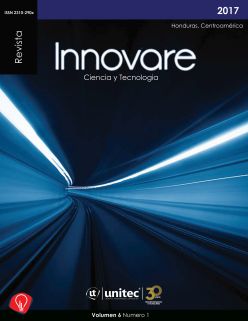Classification of Soils of the Northeast and Northwest Zone of San Pedro Sula
DOI:
https://doi.org/10.5377/innovare.v6i1.4942Keywords:
Soil, USCS method, granulometry, specific gravity, hydrometricAbstract
The main objective of the investigation is to classify the soil of the Northeast and Northwest sector of the city of San Pedro Sula through the USCS (Unified Soil Classification System) Method. It was achieved by dividing these sectors into nine quadrants, to form a total area of 9 km2 and to take samples, every 0.50 m, of soil to 2 m depth. There were 92 tests of granulometry (ASTM C -136), specific gravity (ASTM D-558) and hydrometrics (ASTM D- 422) to determine the type of soil that exists by strata and validate the data using statistical methods. The research hypothesis was that in the study area according to the USCS classification of at least 45% of the soil is type SM (silty sand). It was concluded that the classification of the soils present in the research area are: poorly graded sand (SW-SM), silty sand (SM), poorly graded sand (SP), well graded sand (SW), poorly graded gravel (GP), well graded gravel (SP-SM) GW), records slime (GM). The sand silt type (SM) is the most predominant, obtaining 32.61% of the total samples.Downloads
Download data is not yet available.
Abstract
2233
2233
PDF (Español (España)) 2244
Downloads
Published
2017-08-31
How to Cite
Morales Fuentes, M. J., Gale Torre, L. M., & Fernández Hernández, R. E. (2017). Classification of Soils of the Northeast and Northwest Zone of San Pedro Sula. Innovare: Revista De Ciencia Y tecnología, 6(1), 37–52. https://doi.org/10.5377/innovare.v6i1.4942
Issue
Section
Original article




